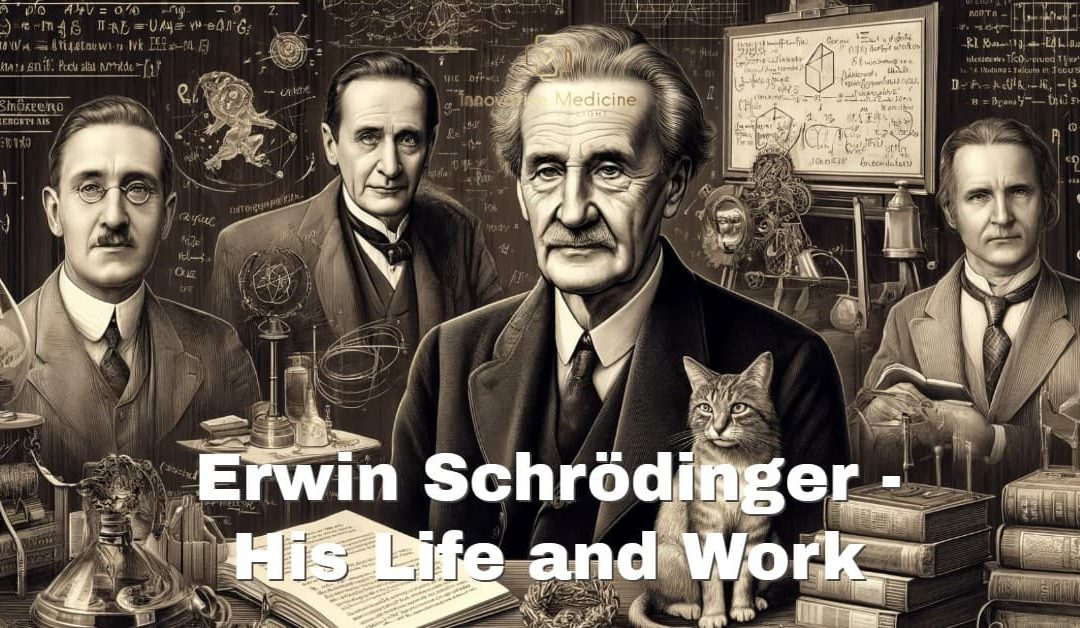Erwin Rudolf Josef Alexander Schrödinger was a physicist who had a significant influence on the world of science. He is famous for his invention of wave mechanics, as well as the Schrödinger equation (which, as the name suggests, he invented) and which was characterized by the simplicity and precision with which it gave the results to problems related to physics. It also had a lot to do with quantum mechanics. In this article, we are going to present different details about the life of Erwin Schrödinger.
A Brief Summary
Erwin Schrödinger was born in Vienna on August 12, 1887, and he would grow up to become one of the most well known theoretical physicists and owner of the wave equation for the motion of the electron. The Nobel Prize in Physics was awarded to him in collaboration with British physicist Dirac in 1933. He later became director of the Irish Institute for Advanced Study and author of his book “What is life?”. He is famous because of his thought experiment work Schrödinger Cat. Erwin Schrödinger died on January 4, in the year of 1961.
The Life of Erwin Schrödinger
Erwin Schrödinger was born on August 12, 1887, in Vienna, Austria. He was the only son of botanist and factory owner Rudolf Schrödinger and Georgine Emelia Brenda (née Bauer), the daughter of Alexander Bauer, a chemistry professor at the Vienna College of Technology. Erwin learned English and German while growing because his maternal Grandmother was English, and both languages were spoken at home. Erwin received homeschooling under special educational supervision until he was eleven years old, after which he joined the Vienna Academic Institute “Akademisches Gymnasium Vienna” and then went on to study at the University of Vienna, where he devoted himself to studying physics. After being influenced by one of his contemporary physicists at the university named Fritz Hasenöhrl. Schrödinger received his doctorate in physics in 1910. He then worked as an assistant at the university for several years, and then he joined the Austro-Hungarian armed forces in Italy as an artillery officer after the outbreak of the First World War. Upon returning to civilian life, he married Annemarie Bertel in 1920. He rose to various academic positions at the universities of Stuttgart, Jena, and Breslau before joining the University of Zurich in 1921.
Schrödinger’s Equation
The six years that Erwin spent as a professor at the University of Zurich was one of the most important stages of his career, during which he immersed himself in successive investigations on theoretical physics. During his reviews of the physicist Louis De Broglie’s thesis that he carried out in 1924, he proposed his theory of wave mechanics. Schrödinger came up with the idea that explains the motion of an electron in the nucleus as wave motion. The following year, he wrote an article on this revolutionary idea that later became known as Schrödinger’s Wave Theory. After Neil Bohr’s atomic theory and De Broglie’s thesis, Erwin explained the motion of electrons in the concept of the wave, opposing the theory of gravitational motion of particles. Schrödinger made this discovery in his late thirties and won the Nobel Prize.
Schrödinger left his seat at the University of Zurich in 1927 for another prestigious position at the University of Berlin. It was during this time at the University of Berlin that he met Albert Einstein. Continuing in his post until 1933, he decided to leave after Adolf Hitler’s rise of the Third Reich and the accompanying persecution and abuse of German Jews. Shortly after, Erwin joined the University of Oxford in England until learning that he had won the Nobel Prize in Physics in 1933. In his tribute speech, he claimed that his professor Hasenöhrl would have obtained this award if he had not died during the First World War. During his three years at Oxford, he traveled and worked in various countries, including the University of Graz in Austria. In 1939 he was invited by the Irish Prime Minister Eamon de Valera to work at the Institute for Advanced Study in Dublin, Ireland, to direct his college of theoretical physics. Erwin stayed there until the middle of 1950; he returned to Vienna to continue the career he had previously.
Books Written By and About Schrödinger
In his books, Schrödinger tried it in his influential book “What is Life?” (1944) to link quantitative physics and genetics. He was well versed in philosophy and metaphysics, as revealed in his book “Nature and Greece” (1954,) where he analyzed the beliefs and questions of the ancients, and in his last book “My vision of the world” (1961,) influenced by one of the philosophies Indias of Vedanta to deepen the discussion of faith in the unity of consciousness. Erwin Schrödinger died on January 4, 1961, in Vienna, and in 1989 a book on his life entitled “Schrödinger: Life and Idea” by Professor Walter J. Moore was published.
Bottom Line
Schrödinger is an influence on the world of modern science. His contributions to physics made scientists turn quickly to him, and thanks to his development, the world of technology advanced.

